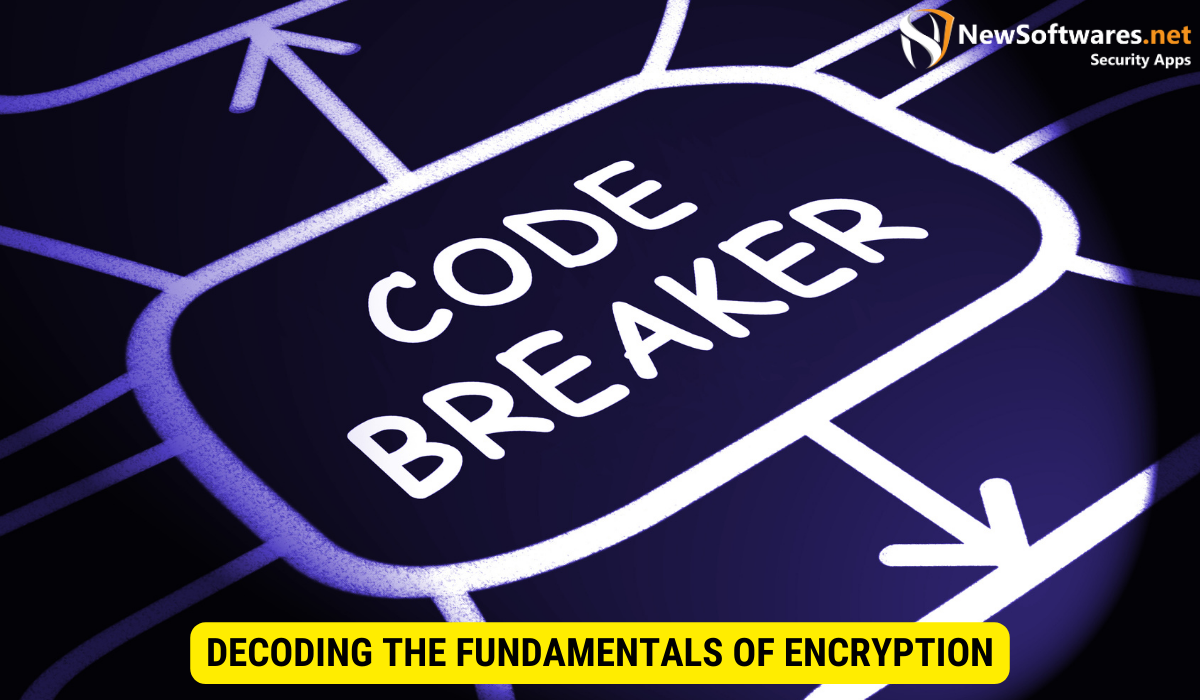Sharing encrypted data involves converting sensitive information into a secure format using cryptographic algorithms and keys, ensuring that only authorized parties can access and understand it. This process safeguards the data during transmission and storage, mitigating risks like unauthorized access and data breaches. The key challenges include managing the encryption keys and addressing potential security vulnerabilities. Future advancements like quantum cryptography and homomorphic encryption are poised to enhance the security and efficiency of sharing encrypted data.
Encryption is a pivotal element in the digital era, particularly for safeguarding sensitive data. But what are the mechanisms behind sharing encrypted data? This exploration will cover the essentials of encryption, the steps involved in data encryption, the difficulties faced when sharing encrypted data, and what the future holds for the sharing of encrypted data.
Decoding the Fundamentals of Encryption

Encryption is the cornerstone of information security, playing an essential role in protecting data from unauthorized access and preserving the confidentiality, integrity, and authenticity of information. This section will dive deeper into the realm of encryption, examining its definition, its critical role in data sharing, and the methods it uses to secure data.
Understanding Encryption
At its core, encryption is the practice of turning readable data into a format that unauthorized users can’t understand. It employs complex algorithms and an encryption key to convert plain text into cipher text, significantly complicating the task for anyone without the key to decode the information.
The roots of encryption can be traced back to ancient times when various methods were used to hide messages. However, modern-day encryption has grown significantly more sophisticated, incorporating complex algorithms and cryptographic techniques.
In our current landscape, encryption is a standard method for securing a wide range of information, from financial transactions and personal details to confidential communications. It’s a critical component in maintaining privacy and security across several sectors, such as e-commerce, banking, healthcare, and government.
The Significance of Encryption in Data Sharing
In today’s interconnected world, we’re continually sharing data, from emails to online transactions. This information is susceptible to interception and misuse if not properly secured.
Encryption is pivotal in data sharing, ensuring that the information exchanged is confidential, integral, and authentic. It acts as a barrier, preventing unauthorized access to the data. Without encryption, any sensitive data transmitted or stored would be open to various threats, including eavesdropping, breaches, and identity theft.
By encrypting data, both individuals and organizations can reduce the risks associated with data sharing. Encryption algorithms scramble the original information into an unreadable format, making it far more difficult for attackers to access sensitive data without the appropriate decryption key.
Furthermore, encryption ensures the integrity of data during transmission. It can detect any unauthorized changes or tampering with the data, ensuring that the information remains unchanged from sender to recipient.
Additionally, encryption verifies the authenticity of data by confirming its source. By encrypting data with a private key, the recipient can confirm that the information came from the expected sender, preventing spoofing and ensuring the data’s genuineness.
In summary, encryption is a fundamental tool in information security, offering a robust method for protecting sensitive data and ensuring its confidentiality, integrity, and authenticity. By understanding the essentials of encryption and its role in data sharing, individuals and organizations can make more informed decisions about the security measures they implement to protect their valuable information.
The Procedure of Data Encryption
Data encryption is a vital component of contemporary information security, transforming data into a format unreadable by unauthorized parties. This process ensures the protection of sensitive information, even if it falls into the wrong hands. Let’s delve into the key stages involved in data encryption.
Key Generation in Encryption
The initial step in the data encryption process is creating encryption keys. These keys are secret codes used to encrypt and decrypt the data. Depending on the encryption algorithm employed, they can be symmetric or asymmetric.
Symmetric encryption algorithms, like the Data Encryption Standard (DES) and the Advanced Encryption Standard (AES), use the same key for both encryption and decryption. This requires the sender and recipient to have access to the same key to communicate securely. Symmetric encryption is noted for its speed and efficiency.
Conversely, asymmetric encryption algorithms, such as the RSA algorithm, use two keys – a public key for encryption and a private key for decryption. This allows secure communication between parties who have not previously shared a secret key. Asymmetric encryption offers enhanced security but is generally slower than symmetric encryption.
Data Encryption Standard (DES)
The Data Encryption Standard (DES) is a symmetric encryption algorithm once commonly used. It works on 64-bit blocks of data and uses a 56-bit encryption key. DES employs complex mathematical operations to transform plaintext into ciphertext.
However, due to advancements in computing power, the security of DES has been compromised over time. The 56-bit key size is now considered insufficient, making DES susceptible to brute-force attacks. Consequently, DES is no longer recommended for contemporary applications where stronger encryption algorithms are available.
Advanced Encryption Standard (AES)
The Advanced Encryption Standard (AES) is currently the most widely adopted symmetric encryption algorithm. Chosen by the National Institute of Standards and Technology (NIST) in 2001 as the successor to DES, AES supports key sizes of 128, 192, and 256 bits, offering robust security.
AES operates on 128-bit blocks of data and applies a series of mathematical transformations, including substitution, permutation, and mixing. These operations are repeated multiple times in rounds to ensure the encrypted data’s confidentiality and integrity.
Due to its strong security and efficiency, AES has become the standard for securing sensitive data and is extensively used in various applications, from secure communication protocols to file encryption and data storage.
In conclusion, data encryption is crucial for safeguarding sensitive information. By generating encryption keys and employing robust encryption algorithms like AES, individuals and organizations can ensure their data remains secure from unauthorized access and potential threats.
Distributing Encrypted Data
Ensuring Secure Data Transmission
When sharing encrypted data, securing the transmission channels is imperative. This can be achieved through protocols like Secure Sockets Layer/Transport Layer Security (SSL/TLS), which establish encrypted connections between parties. SSL/TLS encrypts the data in transit, preventing eavesdropping and tampering.
The Function of Public and Private Keys
Asymmetric encryption, utilizing public and private key pairs, is often used in sharing encrypted data. The sender encrypts the data with the recipient’s public key, and the recipient decrypts it with their private key. This method facilitates secure communication without the need to exchange symmetric encryption keys in advance.
Challenges in Distributing Encrypted Data
Issues with Key Management
A primary challenge in sharing encrypted data is key management. Properly storing and distributing encryption keys to authorized individuals is crucial. Compromised or lost keys can lead to unauthorized access to encrypted data.
Potential Security Risks
Despite encryption’s high level of security, vulnerabilities can exist. Attackers might exploit weaknesses in the encryption algorithm or its implementation, attempt brute-force attacks on the encryption key, or find other ways to undermine the encryption process.
The Future of Sharing Encrypted Data

Quantum Cryptography
Quantum cryptography is an emerging field that utilizes quantum mechanics principles to provide highly secure communication. It uses quantum key distribution for secure encryption key exchange. Quantum cryptography promises to revolutionize encrypted data sharing by offering enhanced security against quantum computing attacks.
Homomorphic Encryption
Homomorphic encryption is an innovative encryption technique that allows computations to be performed on encrypted data without needing decryption. This enables the secure processing of sensitive information while keeping it fully encrypted, reducing the risk of exposure during computation.
Key Takeaways
- Encryption transforms data into an unreadable format using mathematical algorithms and keys.
- Protocols like SSL/TLS ensure the safe transmission of encrypted data.
- Effective key management is essential for securely sharing encrypted data.
- Potential security risks exist despite encryption’s usage.
- Quantum cryptography and homomorphic encryption present exciting advancements in secure data sharing.
FAQs
Is encryption necessary for data sharing?
Yes, encryption is vital for data sharing to protect sensitive information from unauthorized access and maintain confidentiality.
How are encryption keys generated?
Encryption keys are generated using various algorithms and techniques, typically created randomly and stored securely.
Can encrypted data be decrypted without the encryption key?
Without the encryption key, decrypting encrypted data is extremely challenging, if not impossible.
What happens if encryption keys are compromised?
Compromised encryption keys can allow unauthorized individuals to access the encrypted data, potentially leading to data breaches.
Will quantum cryptography replace existing encryption methods?
Quantum cryptography may provide stronger security against quantum computing attacks and might coexist with current encryption methods rather than entirely replacing them.
Conclusion
Sharing encrypted data involves employing encryption algorithms and keys to safeguard sensitive information from unauthorized access. Encryption ensures secure transmission and adds an additional security layer. While key management and potential security risks pose challenges in sharing encrypted data, advancements like quantum cryptography and homomorphic encryption offer promising future solutions. Embracing these innovations can further enhance the security of data sharing in our increasingly digital landscape.
